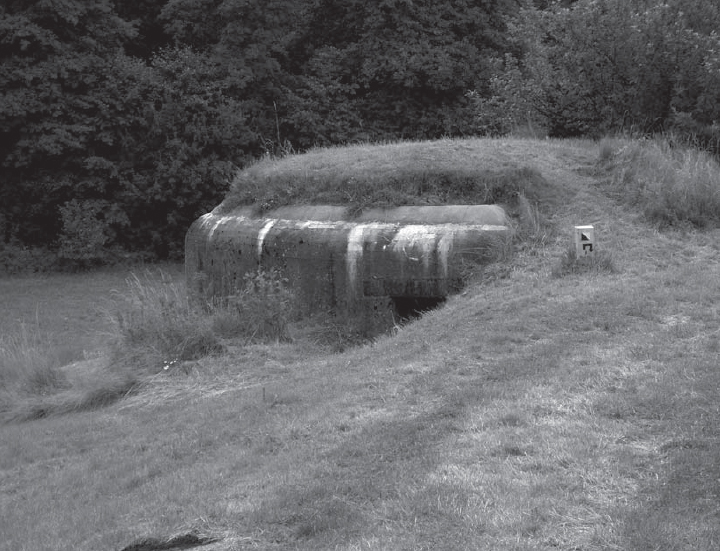

Camouflaged artillery on the Atlantic Wall, one of the most infamous of Hitler’s defences. (Topfoto)
Fortifications, by their very durability in design, are one of the lasting legacies of war. The fortifications of Hitler’s Third Reich are no exception, and can be found in locations ranging from the tourist traps of the French coastline, through to hidden corners of dark forests in Poland. To this day, these structures draw interest from the military minded, and sometimes from those with a more ideological perspective.
Generating understandable fascination are the remnants of Hitler’s headquarters. A large proportion of the Führerhauptquartiere were destroyed either by retreating German forces during the war, or by the Allies after the cessation of hostilities. In spite of this, and with a little research to put the place in context, there is still much to be had from a visit to these places. The sites themselves are scattered across Germany and what had been occupied Europe.
Belgium, somewhat surprisingly, has gone to great lengths to preserve Hitler’s headquarters at Brûly-de-Pesche. The village itself has been preserved much as it was when Hitler used it as a headquarters in 1940, and it is still relatively easy to compare photographs taken at the time with modern views. Almost uniquely, Hitler’s bunker is still in situ and undamaged and two new wooden chalets – not dissimilar to the originals – have been erected and house a museum devoted to the Führerhauptquartier and also a wider study of the war.
Unlike its near neighbour, France has not embraced the fact that Hitler established a series of Führerhauptquartiere on its territory. Part of the reason for this is that Wolfsschlucht II near Margival, the largest and best-preserved example, was used by NATO after the war and later as a training site for French commandos with access restricted. Although now disused, the site is still fenced off and impromptu visits are actively discouraged. However, the site is opened to the public at certain times of the year.
Understandably, perhaps, little remains of the various Führerhauptquartiere in Germany. The bunkers of FHQ Adlerhorst were demolished after the war and the area redeveloped with the concrete bunkers sometimes used as the foundation for new buildings. Schloß Ziegenberg remains, and, although badly damaged in the war, it has been restored. Führerhauptquartier Felsennest was also demolished and the area around it has seen significant changes, but, despite the fact that it is not advertised, the determined historian can still find vestiges of the bunkers outside the village of Rodert. Slightly farther south it is also possible to find remains of the bunkers at FHQ Tannenberg. Despite the fact that it was witness to one of the most momentous events of the 20th century, the Führerbunker in Berlin was demolished and the remains buried, and today nothing is left to visit except a map of the bunkers.
Poland remains home to three of Hitler’s wartime Führerhauptquartiere. The most famous of these, FHQ Wolfsschanze, is located in the north of the country near Ketrzyn and is a popular tourist attraction. The facility was completely destroyed by the retreating Germans in January 1945, but the remains can still be visited. Some of the original buildings have been restored and are now used as a hotel and restaurant for visitors to the site. Nearby, the remains of the OKH headquarters ‘Mauerwald’ are much better preserved and are well worth a visit.

One of the three concrete pillboxes built around the tunnel at Stepina to protect the facility. Each pillbox was fitted with three apertures for machine guns. Access was through a single entrance sealed with a steel door, though, if necessary, an emergency exit was provided. (Neil Short)
Farther to the south, near Lodz, is Anlage Mitte (Tomaszów Mazowiecki) where an artificial tunnel was constructed for the Führer’s train. It was never used by Hitler, but is still intact and can be viewed by the public. A similar facility was built at Stepina and is where Hitler met Mussolini in August 1941. Today the tunnel is used as a museum with a collection of Soviet and German militaria on show. The disused rail tunnel at Strzyzów, which was adapted for Hitler’s use, is also open to the public. Führerhauptquartier Riese is in south-west Poland and is a massive complex. Parts of it are open to the public like the Osówka Complex, near Głuszyca, but many of the tunnels are dangerous and should not be visited without specialist equipment and local guides.
These sites, and those remaining of the West Wall, Atlantic Wall and other fortifications, are immensely evocative. Some, such as the easily accessible sections of the Atlantic Wall around Normandy and the Pas-de-Calais, still convey brute strength and force. Casual tourists should not, however, go wandering into bunkers unprepared. Many large bunkers had sub-basements for storage, and over the years wooden floors have rotted, making them a natural trap for the unwary. Also, some of the bunkers are on private property and tourists are not necessarily welcome without permission. As always, do your research first before making a visit.
What attracts many people to view these fortifications is not just their technical or tactical significance, but also the mood that they evoke. When we enter a bunker or fortification, there is a sense of descent into history, and the ghosts of the past seem somehow vividly present in the damp walls and dark corridors. The fortifications also provoke the unsettling sense of being both places of protection, yet also potential graves. Such unsettling landmarks of the Third Reich will remain with us for decades, if not centuries, to come.